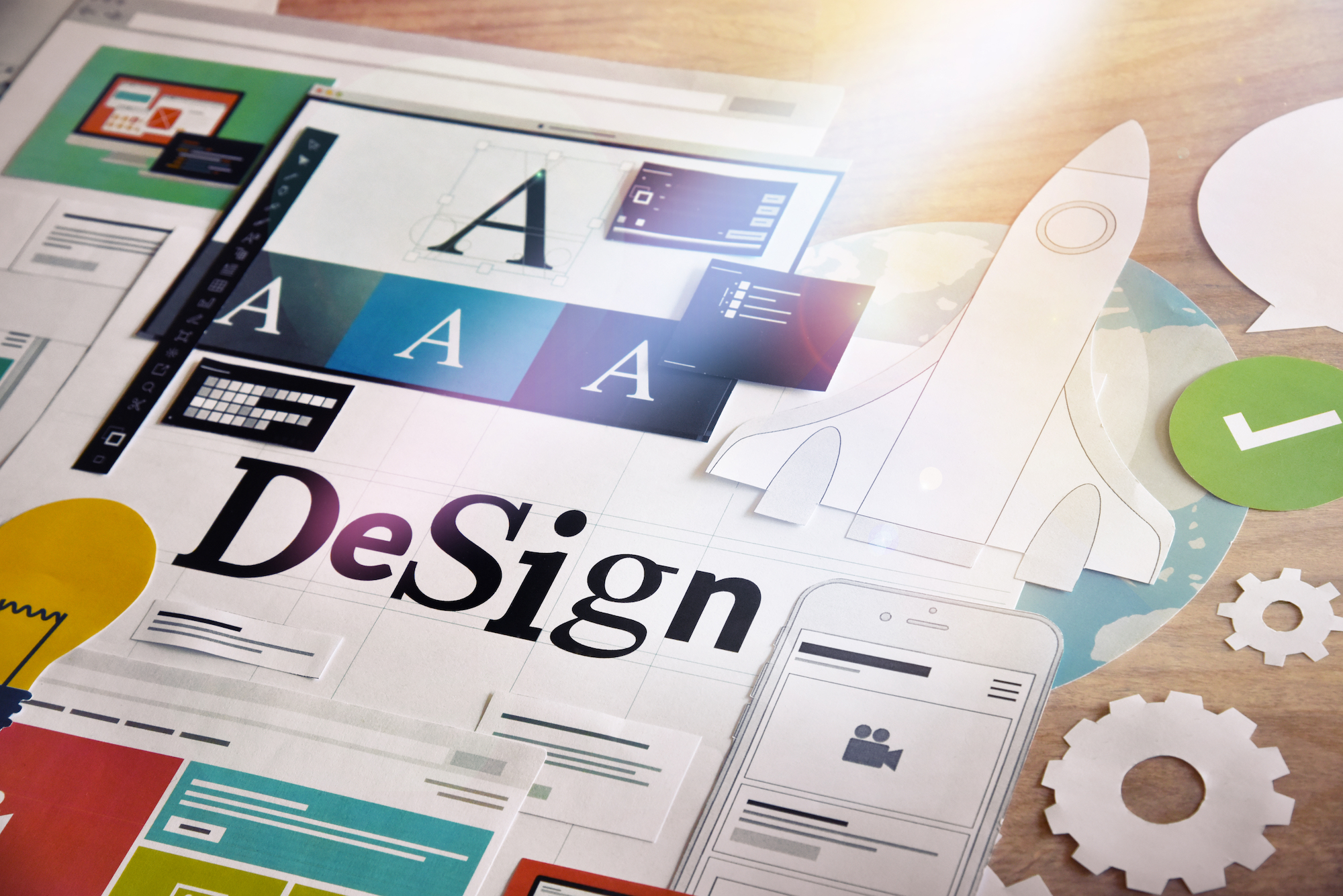As a business owner, your brand identity is your single most important and valuable asset. This is true for businesses of all sizes and across all industries.
Why is brand identity so important? Because it shapes how your business is perceived and recognized, not only externally by your customers and stakeholders but also internally by your team members. It also provides a foundational framework for all your communications. Without a solid and strategic brand identity, you will lack control of how your brand is understood and your marketing will be all over the place.
With this in mind, it’s no surprise that so many businesses seek out the guidance and expertise of a brand identity consultant. If you’re considering working with a brand identity consultant, this blog post will help you understand the concept of brand identity, the role a brand identity consultant can play, the key elements of brand identity, pricing information, and all the other details you need to make an informed investment. After all, this is one of the most formative investments you’ll make!
What is a Brand Identity Consultant?
Put simply, a brand identity consultant is a marketing professional who specializes in developing and refining the strategic and visual elements of a brand. With a deep understanding of consumer behavior, market trends, and brand positioning best practices, brand identity consultants enable brands to connect with target customers and differentiate themselves from competitors more effectively.
Brand identity consultants conduct in-depth research and analysis to gain insights into the target market, competitors, and consumer behavior. They often facilitate workshops and collaborative sessions with stakeholders to ensure alignment and cohesiveness throughout the brand development process. Because there are so many different elements of brand identity, their expertise extends beyond design and encompasses the broader aspects of brand strategy.
A brand identity consultant may be a freelance consultant, or they could work for a digital marketing agency like Flyrise. While freelance branding consultants offer great flexibility, branding services provided by a digital marketing agency can offer several compelling benefits. For one, digital marketing agencies often have a diverse team of specialists who have expertise in different areas of branding, such as graphic design, copywriting, market research, and strategy development. Additionally, centralizing branding with other marketing services ensures that your brand identity aligns and integrates seamlessly with your digital presence.

What is Brand Identity?
In order to answer this question, we need to define what a brand is. So what is a brand? It means different things to different people, but the most simple, high-level way to think about your brand is that it’s how people perceive you. People make subconscious connections between things they know and things they don’t in order to help understand them. We want to make people associate “good” things with your brand.
Brand identity refers to all the visual, verbal, and experiential elements that constitute a brand. We’ll dive deeper into the key elements of brand identity later on in this article, but they include things like your brand name, brand story, logo, and color palette, just to name a few. In essence, we want to make positive associations between your brand and your ideal customer from as many angles as possible.
Your brand identity is a holistic representation of your brand’s personality, values, and unique attributes. A clearly defined brand identity will serve as the foundation for all your marketing and communication efforts, both internally and externally. This helps to ensure consistency and coherence across all your marketing and communication channels.

Brand Identity vs Brand Image
Brand identity and brand image are two terms that are often (incorrectly) used interchangeably, although they refer to different aspects of your brand. Brand identity refers to how a brand presents itself, while brand image reflects how that brand is perceived by its audience.
Brand identity is carefully and strategically curated, ideally by a brand identity consultant, to capture a desired brand image and evoke specific emotions and associations. Brand identity, on the other hand, is made up of the audience’s experiences, interactions, and perceptions of the brand. Although brand image is more difficult to control, a brand identity consultant can help align your brand identity with your intended brand image.
Let’s illustrate the difference between brand identity and brand image with a fictional outdoor footwear company called “StridePeak.” The name “StridePeak” evokes a sense of strength, determination, and reaching new heights. It reflects the brand’s focus on athletic performance and capturing the essence of pushing one’s limits. The name combines the idea of stride, representing movement and progress, with peak, symbolizing achievement and reaching the pinnacle of one’s abilities. “StridePeak” stands out and conveys a memorable and distinct brand identity.
Despite StridePeak’s deliberate name and brand identity, the brand image perceived by consumers may differ based on their experiences and interactions with the brand. Suppose a consumer purchases a pair of StridePeak hiking shoes and finds them uncomfortable, thereby limiting their ability to hike long distances and achieve their personal best. They proceed to leave a public review about this negative experience. This social proof can influence consumers’ brand image perception, which may not align with StridePeak’s intended brand identity. This disparity highlights the distinction between brand identity and brand image and the importance of working with an experienced brand identity consultant to help bridge the gap.
10 Essential Brand Identity Elements
Brand identity is multidimensional, which can make it hard to pin down. To help you establish a solid foundation for your brand, here are 10 key elements that work together to make up your brand identity:
- Brand Story or Strategy: 92% of consumers want brands to tell a story. Your brand story is one of the most essential elements of your brand identity not only for this reason but also because provides a foundation and framework for all your other brand elements. However, it is also one of the most difficult brand elements to get right.
Many companies make the mistake of making their brand story all about them, their history, and their products or services. But an exceptional brand story does the opposite; it makes the customer the hero of the story and taps into their problems, frustrations, needs, and goals. This helps create an emotional connection with the target audience, inviting them to view your product or service as the solution they need and your company as the guide to help them get where they want to go.
When developing a brand identity, we always recommend starting with a brand story and then using that story to inspire the other brand elements below. This helps ensure a more cohesive and compelling brand identity. - Brand Name: A brand name is your company’s unique identifier. It is a foundational brand element that plays a crucial role in establishing your brand identity. A strong brand name can enhance brand recognition, differentiate you from your competitors, establish trust and credibility, and even evoke emotions. Because sixty percent of consumers around the world prefer to buy products from brands they recognize, choosing a brand name that is unique and easy to remember is essential. There are many different types of brand names, including descriptive, evocative, lexical, acronym, geographical, founder, and invented brand names.
- Logo: A logo is a visual representation of your brand. Because it serves as your primary identifier, the importance of a well-designed logo cannot be underestimated. Your logo should communicate your brand story, your core values, and the essence of your company. A well-designed, professional logo can significantly boost brand recognition and trust, so it’s certainly a worthwhile investment.
- Color Palette: Because 80% of consumers say that color increases brand recognition, an eye-catching color scheme can really help you stand out to your target audience. In choosing a signature color or color palette, consider color psychology; rather than personal preferences, choose your colors based on your brand story, your ideal customer, and the emotions and positive associations you aim to evoke.
- Typography: Typography refers to the selection and arrangement of fonts used in your brand communication. While brand personality should absolutely be considered when choosing fonts, you should consider legibility over other factors, as your messaging needs to be easily readable across a variety of different platforms. It’s also essential to ensure that your use of typography is applied consistently across your logo, website, promotional materials, and other brand assets. This helps with recognition and makes your brand appear more professional.
- Imagery: Imagery includes all visual elements used in your branding, whether that be photography, illustrations, or graphics. Imagery can help reinforce your brand story and conjure different emotions. And because the human brain processes visuals so much faster than text (a whopping 60,000 times faster!), visuals are a powerful tool to help you communicate concisely and effectively.
- Style Consistency: Consistency is key when it comes to branding because the goal is to increase recognition. All brand elements, from fonts to imagery, should be applied consistently across all marketing channels. Say you post photos regularly to Instagram and Facebook – you would want those images to be edited in a way that is immediately recognizable to people scrolling through their feeds. Use the same color scheme, crop them in the same fashion, use the same font for any text overlays, etc. Eventually, the audience will start to recognize your posts and associate them with your brand.
- Tone and Voice: When it comes to brand communication, it’s not just what you say but how you say it that matters. Brand voice refers to the overall style, language, and messaging approach, while tone refers to the specific emotional inflection to which the brand voice is applied. Brand voice tends to remain consistent, while brand tone may vary depending on the channel used or the purpose of the communication.
Countless tones can be used in your communications, including formal, informal, professional, academic, casual, humorous, optimistic, worried, friendly, curious, assertive, encouraging, persuasive, conversational, whimsical, etc. That being said, it’s best to limit your use of tone so that you can create a predictable and recognizable brand personality. - Core Values: Brand values are fundamental to brand identity because they help define your brand personality, differentiate it from competitors, and guide your brand communication. They can help you establish unique brand positioning and create a sense of trust and affinity with your target audience. Aligning your brand identity with your core values will foster loyalty both internally with employees and externally with customers.
- Brand Culture: Brand culture is how your brand identity is represented or embodied within your company. Your core values should represent your team’s collective mindset and shared beliefs, helping to foster a collective sense of purpose and direction. A solid and unified internal culture will impact how your brand is perceived externally, leading to enhanced brand loyalty.
Depending on the product or service you offer, your company may require additional brand elements, including but not limited to the following: a slogan, tagline, or one-liner, product packaging, user experience, sound and audio, and environmental design.
Brand Identity Pricing
Brand identity pricing can vary depending on several factors, including the complexity and scope of the branding project, reputation and experience of the brand identity consultant, geographic location, specific needs of the client, and pricing model.
Brand identity consultants can be paid hourly, per project, or via an ongoing retainer. Generally speaking, project-based pricing tends to be the norm, with fees ranging from $5,000 to $50,000 or more for a more complete branding package. Hourly rates are more common among less experienced freelance consultants and can range from $100 to $300 per hour or more. Retainer agreements vary depending on the level of ongoing involvement and specific services included but tend to range from $2,000 to $10,000 or more per month.
When considering the cost of hiring a brand identity consultant, it’s important to evaluate the long-term value they can offer to your company. A well-executed brand identity can have a significant impact on your brand image, market positioning, brand recognition, and customer engagement. Although it may seem like a significant upfront investment, it can yield substantial returns over time.
If you’re looking for a more detailed pricing breakdown, check out our blog post, “How Much Does Branding Cost?” for information on the cost of brand audits, logos, brand packages, and custom branding.
Brand Identity Services from Flyrise!
Here at Flyrise, we offer a wide range of brand identity services, including company naming, brand messaging strategy, visual branding, and more. We have branding packages, a la carte branding services, and custom options depending on your needs and budget.
Once your brand identity is crystal clear and ready to roll out, take advantage of our ongoing digital marketing services. We’ll communicate your brand identity to your target audience and ensure your brand image aligns with your intended brand identity.
Schedule a free session with a Flyrise brand identity consultant today to learn more about our packages and pricing!
